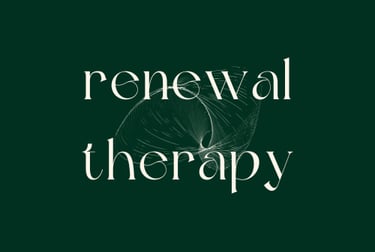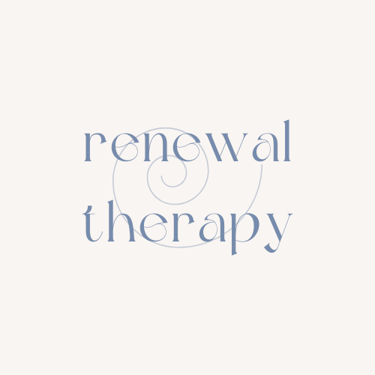How to Know if Your Desire for Connection Is from a Younger Part or Adult Consciousness
Connection is natural; we all want it. Knowing if your desire for connection is coming from a wounded place or from grounded adult consciousness can change the way you relate. This post explores how to recognize when a younger part is seeking safety through urgency or fusion, versus when your adult Self is reaching out from wholeness and mutuality. With insights from Internal Family Systems (IFS) and NARM, you’ll learn how to stay connected to yourself while inviting authentic intimacy with others.
Rachelle Tersigni
6/19/20253 min read


What Is Self?
In Internal Family Systems (IFS), "Self" is the core of who we are—whole, undamaged, and inherently relational. Self carries the 8 C’s and 5 P’s, which naturally arise when we’re not being dominated by protective parts or younger wounds.
The 8 C’s of Self:
Calm, Clarity, Compassion, Curiosity, Confidence, Courage, Creativity, Connectedness
The 5 P’s of Self:
Presence, Patience, Perspective, Persistence, Playfulness
From Self, our desire for connection comes from a place of abundance rather than fear. It seeks closeness without losing boundaries, and intimacy without fusion.
What Is Adult Consciousness?
In NARM (NeuroAffective Relational Model), this grounded place of Self may be referred to as "adult consciousness" or "adult presence." When we are in adult consciousness:
We stay connected to ourselves even when we're with someone else.
We can respond instead of react, especially during conflict or emotional distance.
We express our needs honestly and kindly, without blame.
We tolerate discomfort and uncertainty without panic.
We allow our partner to have their own experience without taking it personally.
How Self and Younger Parts Relate to Connection
Self's Desire for Connection
Comes from abundance and wholeness
Seeks mutual, respectful intimacy
Can tolerate temporary disconnection without spiralling
Respects boundaries
Doesn’t rely on the other person to feel okay
In Self, you might say:
“I’d really like to connect with you right now, but I’m okay if you’re not ready.”
Or:
“A part of me is feeling anxious and wants reassurance. But my Self is here and can be with this part without asking you to fix it.”
This is Self-leadership—bringing kindness and containment to our inner world, even in vulnerable moments.
When your partner wants space, adult consciousness might respond:
“A part of me feels sad or uneasy about this, but I know it doesn’t mean I’m unsafe or unloved.”
Younger Parts' Desire for Connection
When child consciousness is activated, especially in response to a partner needing space or becoming unavailable, the desire for connection can feel overwhelming. It may come from places of unmet childhood needs and attachment injuries.
Signs the desire is from a younger part:
Desperation or urgency
Fears of abandonment
Protest or emotional collapse
Attempts to please or perform
Feeling unworthy or unsafe without reassurance
A younger part might say:
“Please don’t leave me. I can’t survive without you.”
Or:
“You never care about how I feel.”
Or even:
“I’ll be whatever you need me to be—just don’t leave.”
These responses make sense when we understand they are trying to survive using strategies that once worked. The part doesn’t yet trust that our adult Self is here.
Healing begins when we don’t shame these reactions, but bring compassion to them:
“I see this younger part in me is terrified. That makes sense. I’m here now.”
This shift—from reacting from a part to responding for a part—is where growth happens.
The Role of Protector Parts
Protector parts try to manage pain by controlling closeness and disconnection. They may:
Criticize or judge
Withdraw or shut down
Caretake or over-function
Perform or avoid vulnerability
Their goal is not intimacy, but safety.
Speaking FOR a Part Instead of FROM a Part
“I’m noticing a part of me feels anxious and scared when we haven’t been connecting. It’s afraid I’m not important to you, and it’s trying really hard to fix it. But I (my adult Self) am here now, and I can be with it. I just want to share what’s happening inside.”
Why This Works:
Creates intimacy without blame
Regulates both nervous systems
Brings compassion and curiosity into the relationship
Guided Self-Practice: Who Wants Connection Right Now?
Pause and ask: Who in me wants connection?
Is it my adult Self? Or a younger part?
Locate it in the body.
Where do I feel it? What age might this part be?
Bring in Self-energy (8 C’s and 5 P’s).
“I see you. You want to be close. That makes sense.”
Ask what it fears will happen without connection.
Abandonment? Rejection? Not being enough?
Reassure the part from adult presence.
“You’re not alone anymore. I’m here with you.”
Choose a Self-led response.
Maybe you reach out, maybe you stay present with yourself, maybe you reach for your partner and name that it is coming from a part or child consciousness and that you are trying to be there for yourself in this.
Reflection Questions:
Who usually wants connection inside me—Self or a part? Adult consciousness or child consciousness?
What shifts when I bring Self-energy or adult consciousness to that part or to child consciousness?
Can I stay present with my needs without demanding others meet them?
Relating from Self and adult consciousness doesn't mean we stop wanting connection. It means we learn to want it wisely—with patience, clarity, and presence. When our inner world is held with compassion, our outer relationships become freer, safer, and more honest.
Intentional therapy from the comfort of your own home.
Virtual sessions in the Greater Toronto Area and across Ontario, and Quebec Canada
Telephone: 289-277-6638


Renewal: to make like new : restore one's experience to the freshness of the present, to bring vigor, to replace something old.
Instead of operating from old, outdated psychobiological and neural pathways, slowly over time, we learn to create current, updated pathways that support us to experience what we want for ourselves in life.
